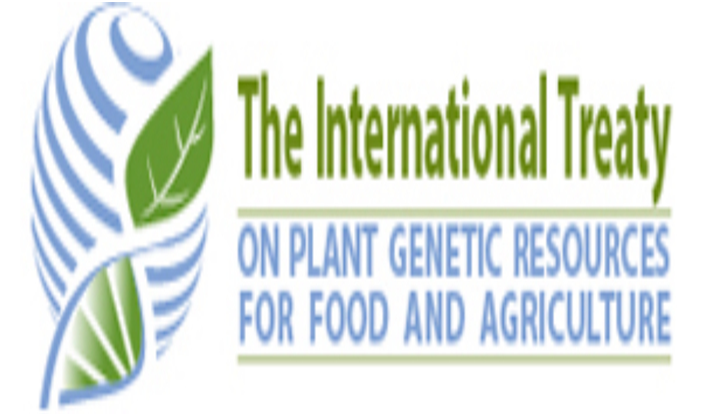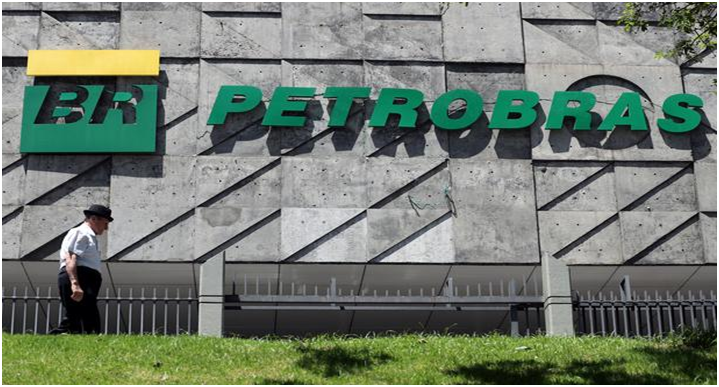US terminates designation of Afghanistan as major non-NATO ally (GS Paper 2, International Organisation)

Why in news?
- Recently, the US President has terminated the designation of Afghanistan as a major non-NATO ally, more than a year after the Taliban captured power in Kabul.
Background:
- The change in Afghanistan's status follows withdrawal of US troops from the country in 2021, ending nearly 20 years of war.
- Afghanistan swiftly fell back into the hands of the Taliban, which have repeatedly made assurances to the international community that they will protect the rights of women and girls, while simultaneously stripping away many of their freedoms and protections.
- In 2012, the United States named Afghanistan a major non-NATO (MNNA) ally, which cleared the way for the two countries to maintain a defence and economic relationship.
- The designation gave several facilities and concessions to Afghanistan in terms of defence and security-related assistance and equipment.
Major Non-NATO (MNNA) status:
- The MNNA status was first created in 1987.
- With Afghanistan's status rescinded, the US will have 18 major non-NATO allies.
- They are Argentina, Australia, Bahrain, Brazil, Colombia, Egypt, Israel, Japan, Jordan, Kuwait, Morocco, New Zealand, Pakistan, the Philippines, Qatar, South Korea, Thailand and Tunisia.
- Taiwan is treated as an MNNA, without formal designation as such.
Advantages of MNNA Status:
- A major non-NATO ally is eligible for loans of material, supplies, or equipment for cooperative research, development, testing, or evaluation purposes.
- They are also eligible as a location for US-owned War Reserve Stockpiles to be placed on its territory outside of US military facilities.
- These countries enter into agreements with the United States for the cooperative furnishing of training on a bilateral or multilateral basis, if the financial arrangements are reciprocal and provide for reimbursement of all US direct costs.
MNNA Status for India:
- In September 2022, Indian-American Congressman Ro Khanna tabled a resolution in the House of Representatives to designate India as a major non-NATO ally.
Ninth Session of Governing Body of the ITPGRFA
(GS Paper 2, International Organisation)
Why in news?
- Recently, the Ninth Session of the Governing Body (GB9) of the International Treaty on Plant Genetic Resources for Food and Agriculture (ITPGRFA) concluded.
- In the six-day GB9 session of ITPGRFA, more than 400 eminent scientists and resource persons from 150 member-countries participated in the deliberation during the 9th session of GB.

Key Highlights:
First contribution towards Benefit Sharing Fund of Treaty from India
- In a historical first, Federation of Seed Industry of India (FSII) contributed Rs 20 lakhs (~USD 25,000) to the Benefit-Sharing Fund (BSF) as the first collective contribution from Indian seed sector, during the GB-9 meetings.
- The BSF is the funding mechanism of the Treaty used for support of capacity building, Conservation and sustainable use projects among the Contracting Parties of the Treaty.
India appointed as Co-Chair of the Working Group on Enhancement of MLS
- Dr Sunil Archak, ICAR-National Bureau of Plant Genetic Resources, India, was appointed as Co-Chair, along with Dr Michael Ryan, Department of Agriculture, Canberra, Australia, on the Working Group on ‘Enhancement of the Multilateral System (MLS)’.
- A fully functional user-friendly and simple MLS is crucial for the success of the ITPGFRA.
- Elements of enhancement would include measures for increased benefit sharing mechanism, expansion of crops and accessions available through the MLS, while also taking into cognisance changes in scientific, technical and policy environment globally.
Consensus on implementation of Farmers Rights reached after extensive negotiations at GB9
- Based on meetings in the last five years of Ad Hoc Technical Expert Group (AHTEG) on Farmers’ Rights (FRs)and the working group/plenary deliberations during the GB9 meeting, a resolution on implementation of Farmers Rights under Article 9 was finally agreed upon ensuring equilibrium and justice.
Resolutions:
- The GB called upon the Contracting Parties to update inventory of national measures, best practices and lessons learnt for national implementation of Farmers’ Rights under the Treaty, as per the national legislation.
- Further, the Treaty Secretariat was requested to publish the options for realization of Farmers’ Rights, including Option Category 10 (legal measures for the implementation of the Farmers’ Rights), which was noted as Co-Chairs proposal, based on India’s experience under the Protection of Plant Varieties and Farmers’ Rights (PPV&FR) Act, 2001 where FRs are well balanced with Plant Breeders Rights were included in the resolution as the Co-Chairs.
- The GB9 also called upon the Treaty Secretariat to include in its multi-year programme of work (MYPOW) for possible impact of digital sequence information (DSI) on Farmers’ Rights.
- The GB9 welcomed the offer of Government of India to host a global symposium on Farmers’ Rights to share experiences and discuss future work on Farmers’ Rights and also for the assessment of the Implementation of the Farmers’ Rights as per the Treaty Article 9 in various countries which are Contracting Parties.
India flags issue regarding genebank funding:
- In a major breakthrough in the GB9 of ITPGRFA, Contracting Parties acknowledged the intervention made by India, and supported by many African nations, regarding effect due to institutional reform within the CGAIR system on funding of genebanks globally, and CIFOR-ICRAF and ICRISAT in particular.
- GB emphasised the need to ensure the long-term safety of the Article 15 IARC genebanks and the distribution of germplasm held ‘in trust’ by the CGIAR centres and other Article 15 genebanks, and for long-term solutions by strengthening the Treaty and the Crop Trust mechanism.
About ITPGRFA:
- ITPGRFA is a legally binding comprehensive agreement adopted in November, 2001 at Rome during the 31st session of Food and Agriculture Organization of the United Nations, which entered into force on June 29, 2004 and currently has 149 Contracting Parties, including India.
- The treaty provides solutions to achieve food and nutritional security as well as climate resilient agriculture. Countries are inter-dependent for PGRFA and consequently a global order is essential to facilitate access and benefit sharing.
India's 1st Avalanche Monitoring Radar installed in north Sikkim
(GS Paper 3, Environment)
Why in news?
- The Indian Army and the DefenceGeoinformatics and Research Establishment (DGRE) have jointly installed the Avalanche Monitoring Radar, first of its kind in India, in north Sikkim.
The radar was inaugurated at one of the forward posts of the army at an altitude of 15,000 feet in north Sikkim.

Scope:
- The avalanche radar was made operational by Defence Research and Development Organisation's wing DGRE, which is involved in forecasting and mitigation of avalanche hazards faced by Indian Army in the Himalayan region.
- Besides being used for detection of avalanches, this radar can also be employed to detect landslides.
Salient features:
- This radar has the capability to detect avalanches within three seconds of their triggering and will assist in saving valuable life of troops and civilians as also vehicles in super high altitude areas.
- This radar uses a series of short micro wave pulses which are scattered at the target and can detect an avalanche in less than three seconds.
- The radar, which can permanently scan the targeted slope for avalanche release and track its path and its size in case it is triggered, can "see" through snow, fog as well as in the night, making it an all weather solution and covers an area of two sq/km obviating the requirement to place additional instruments in dangerous avalanche prone areas.
- The radar is also linked to an alarm system enabling automatic control and warning measures in case an avalanche is triggered.
- Images and videos of the event are automatically recorded for future analysis by the experts.
Way Forward:
- In an area where frequencies of avalanches are high, the radar will go a long way in safeguarding the life of troops deployed in hostile terrain and sub-zero temperatures while at the same time limiting damage to vehicles and equipment at such snowbound high-altitudes area.
BPCL signs pact with BrazilisPetrobras to diversify crude oil sourcing
(GS Paper 3, Economy)
Why in news?
- Recently, State-owned Bharat Petroleum Corporation Ltd (BPCL) signed an agreement with Brazilian national oil company Petrobras for sourcing crude oil from the Latin American nation as part of plans to diversify its sourcing needs.
Diversification:
- BPCL imports a large volume of crude oil which is turned into fuel such as petrol and diesel at its three oil refineries at Mumbai, Bina in Madhya Pradesh and Kochi in Kerala.
- The firm, which gets majority of its supplies from west Asian nations such as Iraq and Saudi Arabia, is looking to diversify its sources of supply in an attempt to cut down reliance on any particular region.

Key Highlights:
- The signing of the MoU will strengthen future crude oil trade relations between the two companies and explore potential crude import opportunities by BPCL, on a long term basis, especially considering the current geopolitical situations.
- In July, the Union Cabinet gave approval to the firm to invest an additional $1.6 billion in the Brazilian oil block BM-SEAL-11.
- The block is to start production from 2026-27.
Stake of BPRL:
- Bharat PetroResources Limited (BPRL), the upstream oil and gas exploration and production subsidiary of BPCL, plans to invest $1.6 billion to develop an oil block in Brazil.
- BPRL holds a stake in an ultra-deep water hydrocarbon block in Brazil, owned and operated by Petrobras.
- BPRL has a 40% stake in the block. Brazil’s national oil company Petrobras is the operator with 60% interest. Multiple oil discoveries have been made in the block, which is being developed now.
Background:
- Originally, BPCL had partnered with Videocon for taking the stake in the block in 2008.
- IBV Brasil SA, a 50-50 joint venture between Videocon and BPRL Ventures NV, a unit of BPRL (the upstream arm of BPCL), held 40%.
- But after the bankruptcy of Videocon, BPRL now owns the entire 40% stake.





